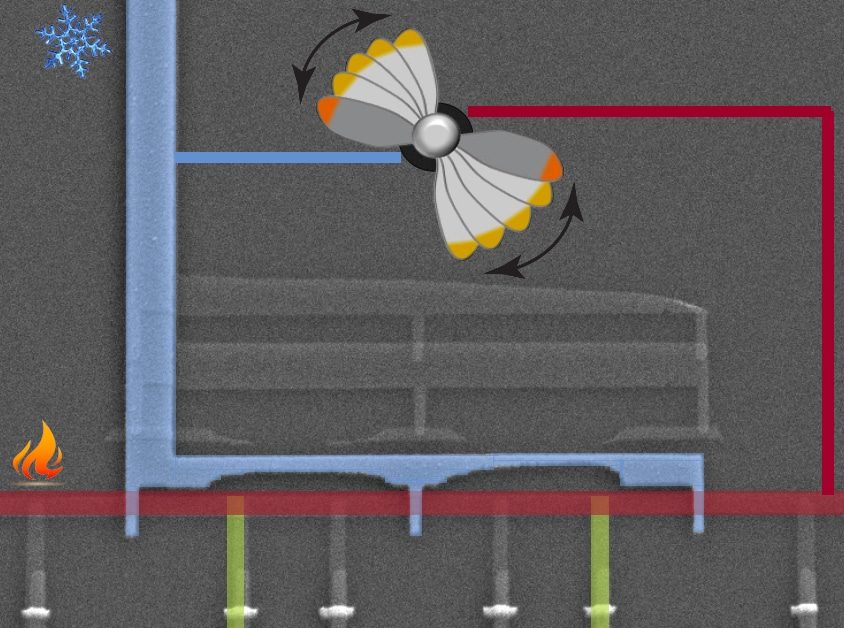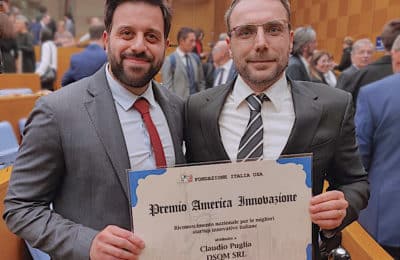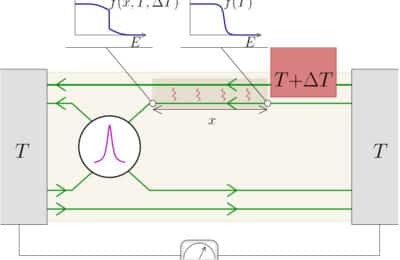Thermoelectric effects in normal metals and superconductors metals are typically small. Now a team led by Francesco Giazotto demonstrates that superconducting tunnel junctions develop a very large bipolar thermoelectricity in the presence of a sizable thermal gradient. This phenomenon, called bipolar thermoelectricity, has been never observed experimentally until now. The results, published in Nature Nanotechnology, might find applications in superconducting quantum technologies.
Thermoelectricity is the capability of materials to directly convert temperature gradients into electrical power, either in the form of a current (Peltier regime) or a voltage (Seebeck regime), whose sign is determined by the sign of the dominant carriers and temperature gradient. “All systems characterized by strong particle–hole symmetry, such as normal metals and superconductors, show poor thermoelectric effects. In superconducting metals until now, and only recently it has been possible to generate thermoelectric phenomena by coupling superconductors to other materials”, explains Francesco Giazotto who leads the Superconducting Quantum Electronics Lab at the NEST Laboratory of Cnr Nano and Scuola Normale Superiore of Pisa.
“The device we have created, on the other hand, is able to generate a voltage or an electric current spontaneously, once two superconductors are coupled with a simple tunnel junction subjected to a strong temperature difference”. A phenomenon never observed before. “This is effect, we call bipolar thermolectricity, has been theoretically predicted by our group only a few years ago, and now it has been demonstrated experimentally”. Giazotto conducted the experiment together with Gaia Germanese and Federico Paolucci (Cnr Nano) with the theoretical contribution of Alessandro Braggio (Cnr Nano) and Giampiero Marchegiani from Quantum Research Center of the Technology Innovation Institute of Abu Dhabi.
The core of the circuit is a tunnel junction consisting of two superconducting metals separated by an insulating material. Once cooled to temperatures below 1 K the circuit is able to generate electrical power originated only from the temperature gradient imposed across the junction. “The unique bipolarity of the reported effect stems from the equal possibility for both directions of the thermocurrent (or polarities of the thermovoltage) at a given temperature gradient and electron configuration of the superconducting electrodes”, explains Braggio. “This phenomenon is determined by non-equilibrium spontaneous breaking of particle-hole symmetry and can be phase controlled in a Josephson interferometer. Our study indicates that this bipolar thermoelectric effect is expected to occur in other materials so far considered of little interest for thermoelectric generation”.
This research has important fundamental and applicative potentials “Our study is pivotal for groundbreaking investigations of nonlinear thermoelectric effects in different systems ranging from semiconductors and low-dimensional electronic materials to high-temperature superconductors and topological insulators”
This research has an important scientific and applicative potential. “From a theoretical point of view it demonstrates that it is possible to generate relevant thermoelectric effects in different systems ranging from semiconductors and low-dimensional electronic materials to high-temperature superconductors and topological insulators”, explains Giazotto. “Regarding possible applications, the technology underlying the device, now covered by a patent, opens up the possibility of designing a generation of innovative thermoelectric devices for superconducting quantum technologies, through the implementation of engines, power generators, electronic devices, memories and radiation sensors; last but not least it opens to the search for new materials capable of producing electrical energy from dissipated heat”.
Gaia Germanese, Federico Paolucci, Giampiero Marchegiani, Alessandro Braggio Francesco Giazotto, Bipolar thermoelectric Josephson engine. Nat. Nanotechnol. (2022). https://doi.org/10.1038/s41565-022-01208-y



